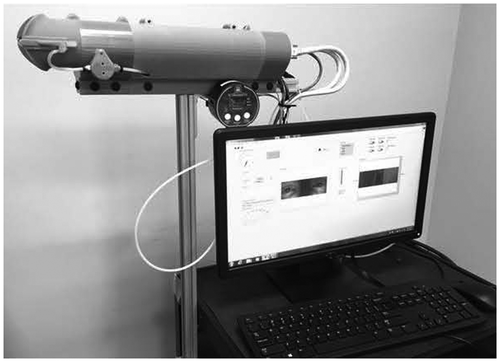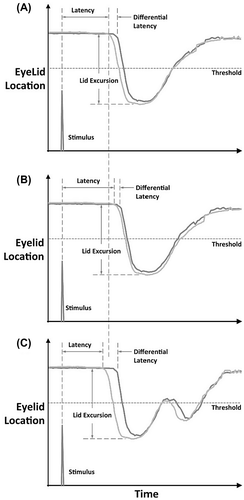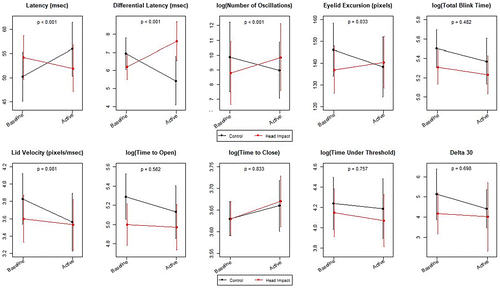Figures & data
Figure 1. Blink reflexometer housing unit and software interface. Tubing connected to the left end of the housing unit delivers a puff of compressed air to the subject’s eyes.

Figure 2. Illustrations of time-displacement profiles of upper lid movement during and after a stimulated blink. (A) Baseline blink reflex time-displacement profile. (B) Blink reflex time-displacement profile after active play. Latency is increased. Differential latency is decreased. Log of number of oscillations is less. (C) Blink reflex time-displacement profile after a head impact causing a concussive event. Latency is decreased. Differential latency is increased. Log of number of oscillations is increased.

Figure 3. Blink reflex parameter changes from baseline due to active play or head impact.

